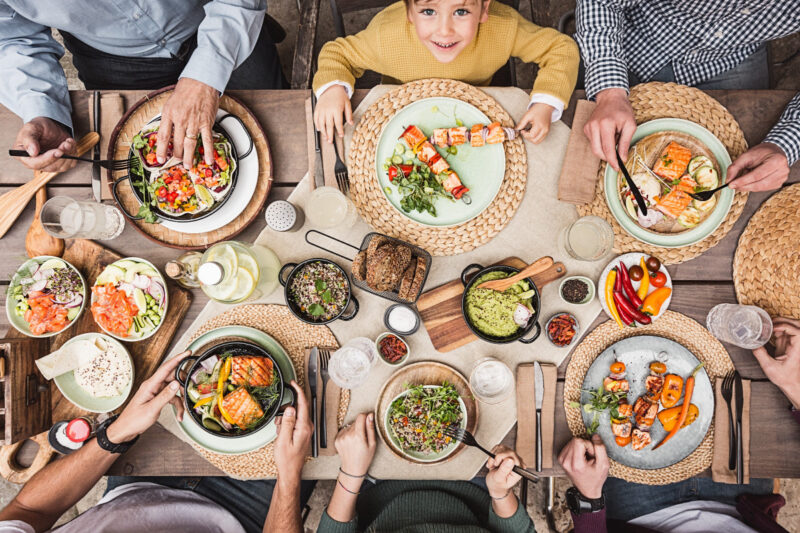Demand for farmed salmon soars around the world
Seafood companies report record global gains as retail demand for sustainably farmed salmon grows
By Fabian Dawson
SeaWestNews
The global demand for farmed salmon is soaring as the world’s largest seafood farmers report record revenues coming out of Covid-19 lockdown measures.
Mowi, the world’s largest producer of farm-raised salmon reported this week that its third-quarter revenues of USD 1.19 billion represents increased earnings by 64% year-over-year.
The company’s year-to-date operational revenue is also trending ahead of 2020 with the company’s revenue and other income reaching USD 3.5 billion year-to-date in 2021, compared to USD 3.1 billion year-to-date in 2020.
“It’s positive to see that the salmon market continues on the road to full recovery,’ said Mowi CEO, Ivan Vindheim.
“The estimated value of salmon consumed globally in the third quarter increased by more than 30% compared with last year and reached a new record-high level for a quarter. This is particularly impressive given that not all markets have yet fully recovered from the Covid-19 pandemic,” he said.
The company said consumption in Europe has increased by 4 percent while consumption in both the U.S. and Asia jumped by 11 percent, in the third quarter of 2021 compared to 2020.
Mowi Consumer Products delivered another strong set of results with the best ever earnings in a third quarter.
“This demonstrates strong retail demand in the market and also our ability to serve new and existing customers across geographies. Mowi Consumer Products has been able to benefit from and capitalise on the shift in demand towards elaborated products,” Vindheim said.
Next year, Mowi expects to harvest 460 000 tonnes farmed salmon.
“Mowi has a clear strategy to grow and Mowi Farming’s harvest capacity is well in excess of 500 000 tonnes. It’s therefore encouraging to see that we are heading towards another record year for farming volumes in 2021,” Vindheim said.
The company said while market prices for its salmon of Canadian origin has increased significantly, earnings in the country were negatively impacted by environmental and biology issues like the plankton bloom in the Quatsino area of British Columbia and a low-oxygen incident at one site in Newfoundland.
Grieg Seafood Group, which is targeting a 90,000 tonne of harvest in 2022, from its farms in Norway and Canada, has also posted higher operational earnings before interest and taxes (EBIT) of USD 17.5 million, in its 2021 Q3 financial report.
The turnaround was driven by high prices from its British Columbia, Canada, operations and declining cost levels, the company said. It also benefited from underlying operational improvements, with increased fish survival in all of its production regions.
The company estimates that it supplied 3.6 percent of the global volume of Atlantic salmon harvested in Q3 2021.
Grieg CEO Andreas Kvame said it was one of the company’s best third quarters in its history.
“Operationally, British Columbia was again a highlight during the quarter, with stable production and high average harvest weights. We continued the positive trend of reduced impact by harmful algae blooms. We experienced the full advantage of the region’s close proximity to a strong U.S. market, where we achieved high prices,” he said.
Cermaq, the world’s fourth largest producer of farmed salmon, has also increased its salmon harvest output in Nordland and Finnmark by 4% to 73,000 tonnes. Norway accounts for around 40% of global salmon production.
Meanwhile, Chile, the world’s second-largest producer of farmed salmon reported that its salmon and trout exports brought in USD 1.17 billion during the third quarter of the year, a 33.5 percent boost compared to the USD 877 million in the same quarter of 2020.
“The positive growth and the results of two consecutive quarters confirm the consolidation of the recovery in Chilean salmon exports to the world and demonstrate the recovery of pre-pandemic levels after a very complex year 2020 for all industries, where salmon farming was no exception,” Chilean Salmon Council Executive Director Joanna Davidovich said in a release. “The greater dynamism in exports helps to boost economic activity and employment. Salmon farming has been an engine of development and opportunities, generating a virtuous circle of entrepreneurship, suppliers, and regional development.”
Exports to the United States, the primary destination for Chilean salmon, jumped 58 percent to USD 611 million during Q3 while Chile’s salmon exports to China jumped 20 percent year-over-year, reaching USD 18 million.
In Canada, however, it’s a different picture.
Canada’s aquaculture production has stagnated since 2001, with an average annual growth rate of about 1% from 2002 to 2019.
“Other nations, recognizing the opportunity, have moved quickly ahead. Over the same time period our share of world aquaculture production has fallen by 54%,” said Tim Kennedy, President & CEO of the Canadian Aquaculture Industry Alliance (CAIA).
The Alliance is urging Canada’s newly appointed Fisheries Minister, Joyce Murray, “to take a number of actions to provide an important signal to renew confidence in the future and unleash frozen capital that is waiting to be invested in communities and innovation.”
(Image courtesy Mowi)

